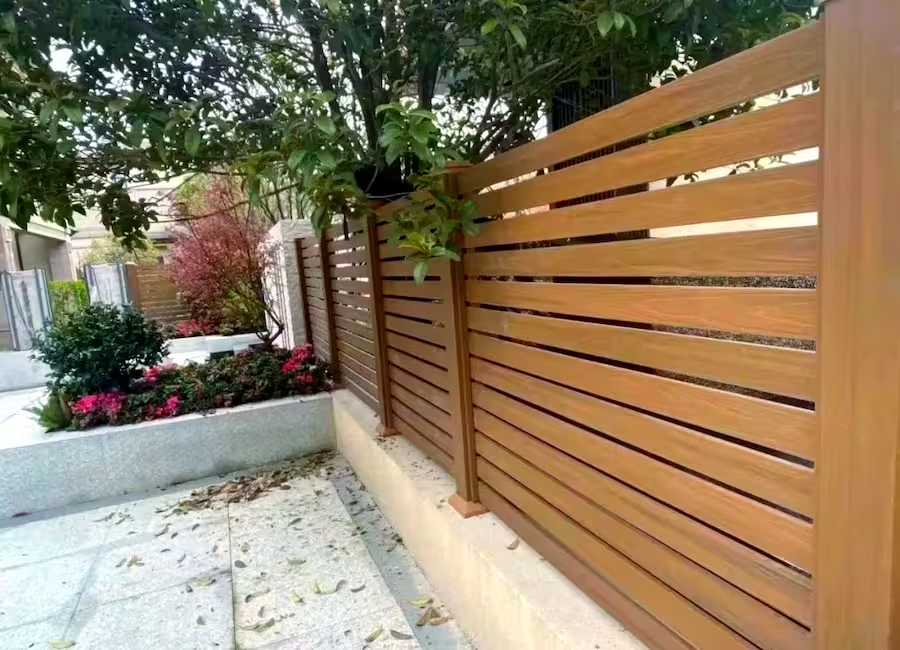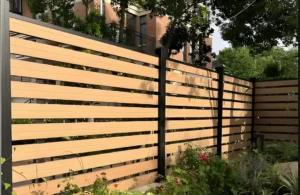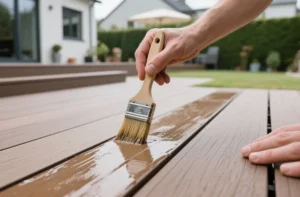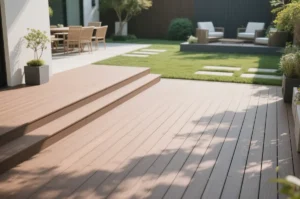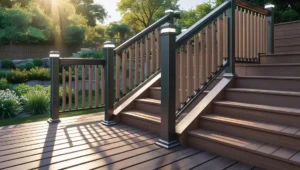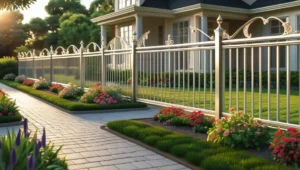When it comes to choosing materials for your garden fence, the options are endless—from traditional wood and wrought iron to modern composites and vinyl. Each material has its pros and cons, but composite fencing stands out for its unmatched balance of durability, low maintenance, and visual appeal.
In this guide, we’ll explore the top benefits of composite fencing, plus a few points to watch out for—helping you make an informed investment in your outdoor space.
What Is Composite Fencing Made Of?
Composite fences are made from a blend of recycled plastic and reclaimed wood fibers. At Gladol, 95% of our WPC (wood-plastic composite) materials are recycled, and all wood is FSC-certified.
Using co-extrusion technology, these components are melted and molded into modular fence boards. This unique manufacturing process gives composite fencing major advantages over both vinyl fences and traditional wooden fencing.
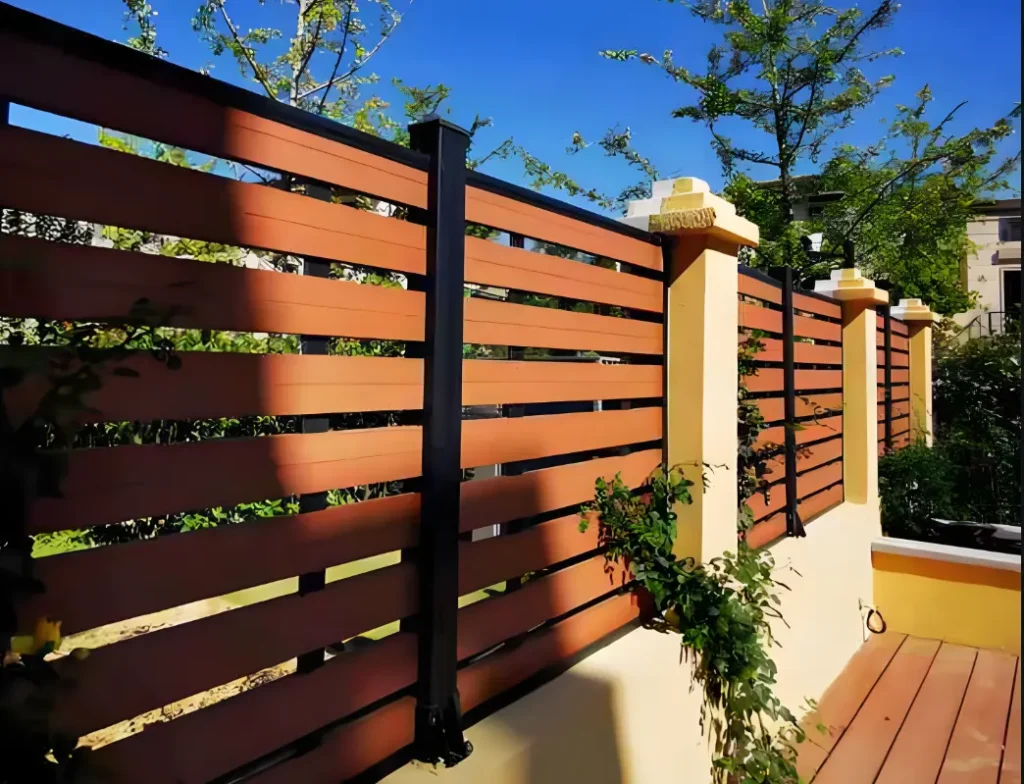
9 Key Advantages of Composite Fencing
1. Exceptional Durability and Long Lifespan
Made from moisture-resistant plastic and wood fiber, composite fences won’t rot, warp, or decay. Unlike wood, water cannot penetrate the core. While wood fences typically last 5–10 years, composite fencing can last 25–30 years or more.
It also outperforms vinyl in impact resistance and won’t crack under pressure. At Gladol, we offer a 20-year warranty, giving you peace of mind and fewer replacements over time.
2. Near Zero Maintenance
Forget annual staining or sealing. Composite fences are:
- Mold- and insect-resistant
- UV-protected against fading
- Easy to clean with just a hose or soft cloth
Unlike wood fencing, there’s no need for repainting or pest treatment. Just clean once or twice a year—saving time, money, and effort.
3. Easy, Modular Installation
Thanks to their lightweight honeycomb structure, composite panels weigh 30–50% less than solid wood. Modular interlocking design allows for:
- Direct installation into existing posts
- Full system installation with matching WPC posts
This makes composite fencing ideal for DIYers—install it solo with ease, increasing speed by over 50% compared to vinyl or wood.
👉 Need help getting started? See our WPC fence installation guide for step-by-step instructions.
4. Eco-Friendly and Sustainable
Composite fencing helps reduce your carbon footprint:
- Made with 95% recycled materials
- No tree-cutting required
- No toxic emissions during manufacturing
- Lasts decades, reducing resource waste
Choosing WPC fencing is not just a purchase—it’s a step toward sustainability.
5. Natural Wood-Like Appearance
Love the texture of real wood? Our multi-layer co-extrusion replicates grain patterns so well, it’s hard to tell the difference.
Gladol offers 5 premium wood tones:
- Silver Birch – Cool gray, minimal look
- Spiced Oak – Classic warm brown
- Walnut – Deep, elegant brown
- Redwood – Rustic reddish hue
- Charcoal – Modern industrial gray
Since color is embedded in the material, not painted on, it won’t peel or fade easily.
6. Excellent Wind Resistance
Our fences withstand winds up to 120km/h (Level 12):
- Flexible design absorbs gusts without breaking
- High-density structure resists cracking
- Hidden fasteners or lock-in clips prevent board loosening
This makes composite fencing ideal for coastal or high-wind regions.
7. Fire-Resistant Safety
Composite fences meet B1 fire-resistance standards, unlike flammable wood:
- Hard to ignite, self-extinguishes when flame is removed
- Low smoke output, safer than PVC
- Suitable for residential zones and public landscapes
While not fireproof, it greatly reduces fire risk.
8. Sound Insulation & Privacy
Dense WPC boards absorb 20–30% more sound than vinyl or metal fencing:
- Blocks street noise
- Reduces neighbor chatter
- Limits barking noise from pets
Pair with taller panels or greenery for maximum privacy.
9. Long-Term Cost Savings
While composite fencing costs more upfront, it offers:
- 30+ years of use
- Near-zero maintenance
- No repainting or pest control
Over time, it’s 40% more cost-effective than wood fencing.
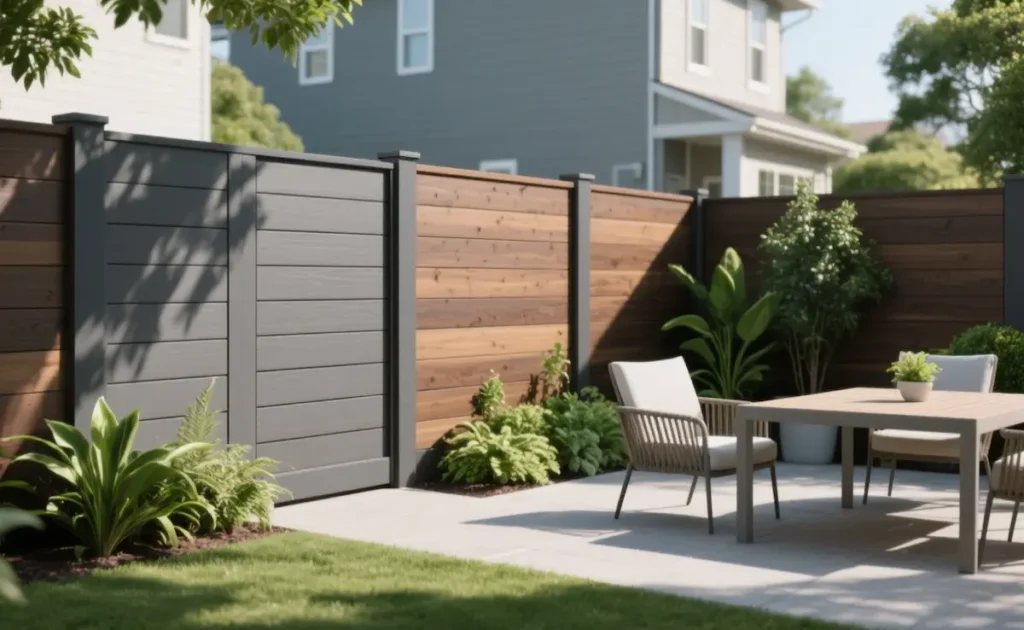
5 Things to Keep in Mind About Composite Fencing
1. Higher Initial Cost
Expect to pay 30–50% more than pine fencing. However, with no maintenance required, you’ll recoup costs in 5–10 years. Consider partial installations or mixing with wood to manage your budget.
2. Slight Fading for Dark Colors
Dark colors like walnut or charcoal may fade slightly in long-term sun exposure. Solutions:
- Choose lighter colors like Silver Birch
- Look for fade warranties (e.g., <15% over 10 years)
3. Quality Varies Between Brands
Low-grade products may contain too much plastic or poor wood mix. To ensure durability:
- Look for 60%+ wood fiber content
- Choose brands with 15+ year warranties
- Request UV/freeze-thaw test data
4. Allow for Thermal Expansion
Composite expands 0.5–1.2%, so:
- Leave 3–5mm gaps between boards
- Use flexible spacers
- Avoid installing at extreme temperatures
Correct installation avoids warping or cracking.
5. Scratch-Resistant, Not Scratch-Proof
The surface resists light wear, but sharp tools may scratch it. Tips:
- Use plastic-headed hammers during install
- Don’t pressure-wash at close range
- Light scratches can be sanded (400-grit paper)
Frequently Asked Questions
Q: Is composite fencing the best choice for fencing?
Compared to vinyl (not environmentally friendly), wrought iron (high maintenance), and wood (prone to decay), composite fencing offers the best overall performance in terms of durability, environmental friendliness, and aesthetics.
Q: How wind-resistant is composite fence?
High-strength composite materials combine robustness with moderate flexibility, enabling them to withstand strong winds without breaking. Their wind resistance far exceeds that of wooden fences.
Q: Is composite fence the longest-lasting fence material?
Composite fences typically last 25–30 years, though they do not match the lifespan of aluminum fences (which can last up to 50 years with proper maintenance). However, aluminum is prone to rust and has higher maintenance costs.
Q: Can holes be drilled into the composite fence panels?
Yes, but it is recommended to pre-drill holes before securing screws/nails to avoid the risk of panel cracking.
Why Composite Fencing Is the Smarter Long-Term Choice
From unmatched durability and minimal maintenance to sustainability and visual appeal, composite fencing outperforms wood and vinyl in nearly every way. While it requires more investment upfront, its 30-year lifespan makes it the most cost-effective solution over time.
Ready to upgrade your fence?
👉 Explore the Gladol WPC fencing collection and discover a beautiful, worry-free solution for your garden.
Want more eco-friendly options? Check out our WPC wall panels for vertical cladding solutions.

